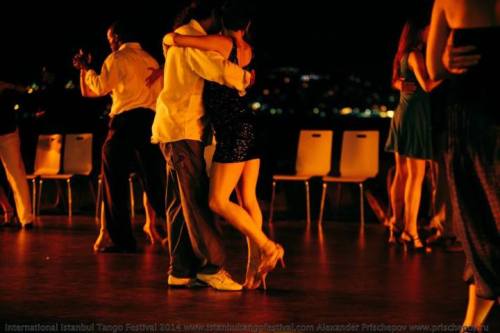A few years ago, tango began a retrenchment. I first noticed it oozing from New York dancers visiting Boston in 2009, but soon saw it in Buenos Aires, felt its venom in Wellington and Sydney, and am now confronted with it regularly even here in radical Berlin. The retrenchment takes the form of extremely simple dancing in which the focus of the dance is not on interesting improvisation, but on musicality, and specifically rhythmic musicality accompanied by quite bigoted claims about any other values and priorities which could be pursued while dancing tango. It also involves an extremely narrow subset of tango music, eschewing contemporary orquestras, post-1950s compositions, and world music. In Berlin one gets the sense that the line of dance is more important than what you are doing in it. This is called “social tango”. That is the form. But I believe the substance of the retrenchment is sexism. Last week I interviewed Andreas. I love to dance
with him because he’s one of the few people who operates in a tango context with something approaching expressive freedom. It was he who used the term ‘Victorian’. I’ve been dancing about 8 years. Here in Berlin there used to be much more creativity in the dancing. Now there is a new tendency to limit the range of moving the body in spite of all the skills we learned from 100 years of contemporary dance or Modern dance, (M. Graham, M. Cunnigham, P.Bausch….) and Tango Nuevo to open the body, to liberate the move, to explore movement in any direction, to learn from other disciplines. And what’s strange is that it’s mostly the young people! The dance in the classical scene remembers me sometimes of a new kind of Neo-Victorians. The new ideal is not to open their legs too much, to make small, elegant, controlled movements. They don’t want their bodies to move too much, too big, too expressive;…

